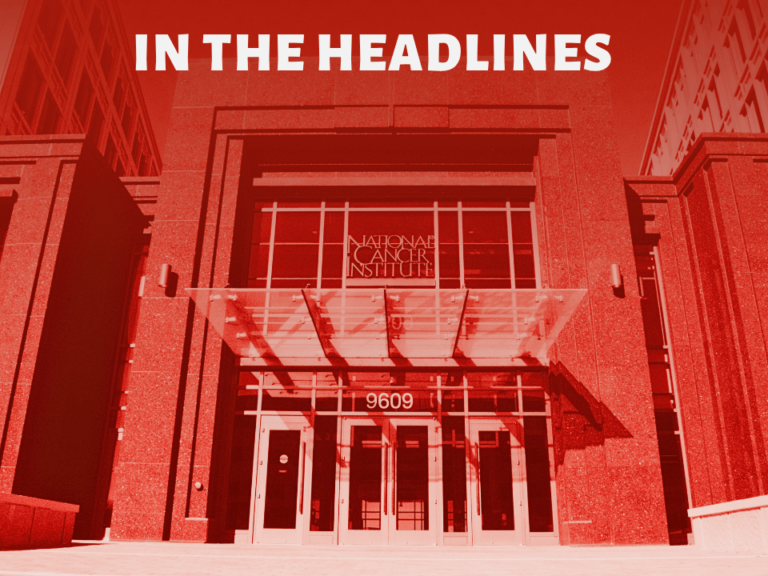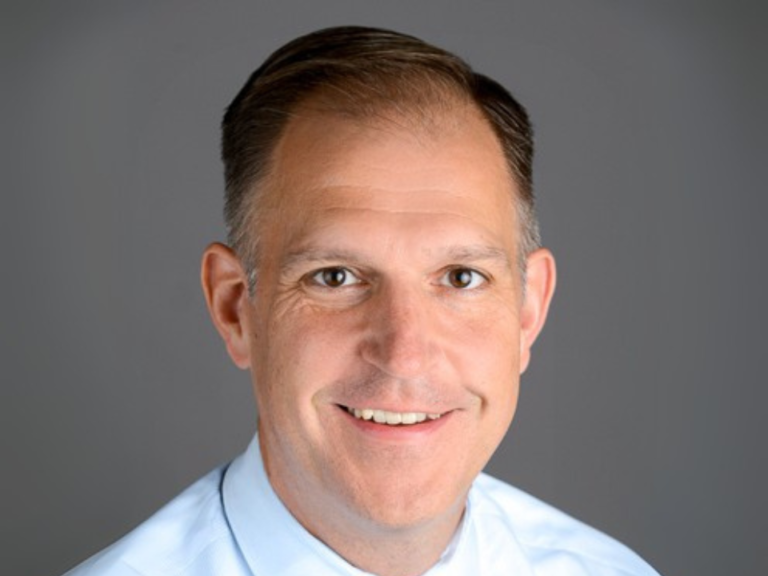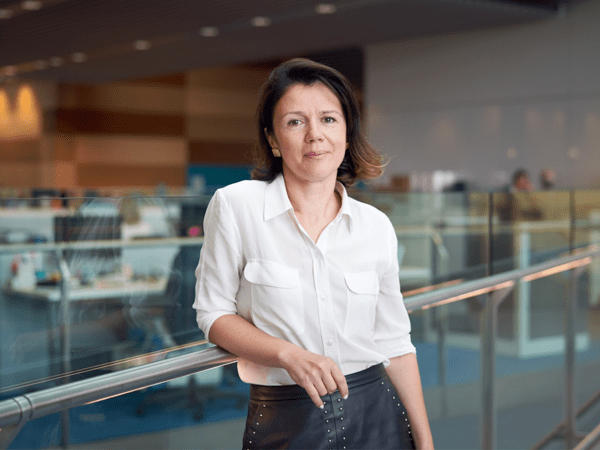- Excerpt: Reflections on AACI by past presidents
By Association of American Cancer Institutes | May 5, 2023
The following reflections on the Association of American Cancer Institutes from AACI are excerpted from “The History of the Association of American Cancer Institutes” by Donald L. Trump and Eric T. Rosenthal.
A PDF version of the book is available here.
AACI presidents interviewed include:
- Jerome W. Yates
- Paul A. Bunn, Jr.
- Max S. Wicha
- John E. Niederhuber
- Harold L. Moses
- H. Shelton Earp, III
- Edward J. Benz, Jr.
- William S. “Bill” Dalton
- Michelle M. Le Beau
- George J. Weiner
- Stanton L. “Stan” Gerson
- Roy A. Jensen
- Karen E. Knudsen
- Caryn Lerman
A full version of these remarks can be found on the Cancer History Project.


Jerome W. Yates (1991-1992)
Jerome “Jerry” Yates was president of AACI from 1991 to 1992 when he was senior vice president for clinical affairs at Roswell Park Cancer Institute. He may be the only AACI president to hold office without serving as the director or CEO of a cancer center; however, he noted that Roswell Park’s president at the time, Tom Tomasi was a basic scientist and not directly involved in many of the clinical issues that faced AACI members. Yates had also formerly overseen NCI’s cancer centers program during the 1980s and had participated in AACI meetings in an ex officio capacity.
Yates said that Memorial Sloan Kettering Cancer Center, Fox Chase Cancer Center, and Roswell Park Cancer Institute were the most active centers in the early 1960s, and AACI meetings provided opportunities to:
Share ideas and stories, involving administration issues, fund-raising, and getting money from the NIH through lobbying
Influence the implementation of guidelines for NCI-Designated Cancer Center grants
Protect reimbursement


Paul A. Bunn, Jr. (1995-1996)
Paul A. Bunn, Jr. was founding director of the University of Colorado Cancer Center from 1986 to 2008 and served as president of AACI from 1995 to 1996. His early recollection of AACI history was that it was the organization that could help the NCI with its plans to create a national cancer center program, and “served as a not-for-profit advice-giving organization.”
He recalled that during his presidency AACI had a parallel mission and agenda as that stated in the National Cancer Act of 1971, including having comprehensive cancer centers in every region of the United States; overcoming disparities in clinical trials; providing care to the underserved; and institutional commitment to outreach, education, and diversity.


H. Shelton Earp, III (2005-2007)
H. Shelton “Shelley” Earp, III, served as AACI president from 2005 to 2007. He was director of the University of UNC Lineberger Comprehensive Cancer Center from 1997 to 2015, when he was succeeded by Norman E. “Ned” Sharpless, MD. Sharpless left UNC to become NCI director in 2017, at which time Earp was reappointed Lineberger director.
Earp said he was first involved with AACI in the 1980s when he was an associate director at Lineberger under then-director Joe Pagano, who served as AACI president from 1996 to 1997. He attended an AACI meeting with Pagano held at Fox Chase in the 1980s where he remembered that most cancer center directors were “kvetching about not having enough money,” causing him to vow at the time, “never to go back” to another meeting.
Earp recalled that during its early days, AACI was pretty much in the “suitcase” of Roswell Park’s Ed Mirand, who served as secretary-treasurer and was the association’s “constant,” as annual meetings rotated among AACI members’ institutions.
The association’s turning point came when AACI decided to establish a permanent office with a paid staff. Earp saw most of AACI’s growth following this event and said that for several years AACI’s focus was on increasing the size of NCI core grants, but that it became more involved in clinical trials toward the end of his presidency and began its clinical research initiative.
He said that as cancer centers became more profitable for their medical centers, they gained more local, regional, and national prestige, which ultimately was beneficial to AACI. The association became more robust over the years and has been helpful to aspiring centers interested in receiving NCI designation.


Michelle M. Le Beau (2012-2014)
Michelle Le Beau served as AACI president from 2012 to 2014, and as director of the University of Chicago Cancer Center from 2004 to 2021.
She said that she knew nothing about AACI before her appointment as cancer center director and was told by an administrator that she “had to go” to AACI’s annual meeting.
She admitted that it took her a few years to understand AACI’s role, and that she later appreciated its value as the only forum for cancer center directors to meet and discuss problems, issues, and initiatives. Le Beau added that meeting with other directors helped members share best practices and learn how to deal with such issues as unfunded mandates.
As with a number of other former AACI presidents we spoke with, she noted that the annual NCI cancer center directors’ retreat was not as interactive as AACI meetings; NCI directors’ retreats were rather a one-sided event with NCI staff talking to the AACI members and often not responding directly to questions. NCI’s interest in those retreats was also dependent upon who was NCI director at the time.
Le Beau’s presidential initiative was molecular diagnostics and how cancer centers could integrate NCI’s CaBIG initiative. However, she felt that the initiative was not successful and was not continued by AACI when the next president’s initiative began.


Roy A. Jensen (2018-2020)
Roy Jensen has served as director of The University of Kansas Cancer Center since 2004 and was AACI president from 2018-2020. He was at Vanderbilt-Ingram Cancer Center before coming to Kansas and said that Hal Moses was his mentor and helped prepare him for his future as a cancer center director.
“When I started at Kansas, Hal encouraged me to join AACI, saying it would be very beneficial for an emerging cancer center, and it turned out to be true,” he said. Jensen said that he was surprised at how open other center directors were in providing “nitty gritty details” about their institutions, noting that David M. Livingston, (Charles A. Dana Chair in Human Cancer Genetics at DanaFarber Cancer Institute and Emil Frei III Distinguished Professor of Medicine, Harvard Medical School), and Ed Benz had invited him and his staff to visit Dana-Farber, where about a dozen senior staff members devoted an entire day to presentations about how things were done at Dana-Farber.


Karen E. Knudsen (2020-2021)
Karen Knudsen had been head of Sidney Kimmel Cancer Center at Jefferson Health for seven years and stepped down as president of AACI in June when she left Jefferson to become CEO of the American Cancer Society. She was succeeded by Caryn Lerman, director of USC Norris Comprehensive Cancer Center.
When she announced her plans at the 2020 AACI/CCAF Annual Meeting, she said that AACI “will address cancer health disparities by leveraging the expertise of North America’s 102 leading cancer institutes. Using a two-staged approach, the initiative will convert understanding of cancer disparities across AACI centers into meaningful, measurable actions to improve the lives of patients with cancer.”


Caryn Lerman (2021-Present)
Caryn Lerman began her term as AACI president on June 1, 2021, succeeding Karen Knudsen who left the position early to become CEO of the American Cancer Society.
Although Lerman has only been director of the USC Norris Comprehensive Cancer Center since 2019, she had been attending AACI meetings since 2006 as deputy director of the University of Pennsylvania Abramson Cancer Center. She said that she had never heard of the organization before then.
Lerman said that she was very excited to be given the opportunity to be part of AACI for so many years and viewed it from the perspective of “a kid in a candy shop,” since it allowed her to be part of a conference centered around cancer 38 centers that went beyond just science to focus on every element that is critical to having a successful organization. She added that AACI meetings helped her to learn about the politics—including the national scene and advocacy involved in running a center—and that it was a great networking opportunity.
Read full remarks from former AACI presidents can be found here.
Quote of the week
When I started at Kansas, Hal [Moses] encouraged me to join AACI, saying it would be very beneficial for an emerging cancer center, and it turned out to be true.
Roy Jensen
- Primary source: The History of the Association of American Cancer Institutes
By Association of American Cancer Institutes | Jan. 13, 2022
Inspired by the 50th anniversary of the National Cancer Act, AACI is pleased to share The History of the Association of American Cancer Institutes. Written by Donald L. Trump and Eric T. Rosenthal, authors of “Centers of the Cancer Universe: A Half-Century of Progress Against Cancer” (Rowman & Littlefield, 2021), the AACI history is based on meeting minutes, other source documents and interviews with AACI past presidents.
This column features the latest posts to the Cancer History Project by our growing list of contributors.
The Cancer History Project is a free, web-based, collaborative resource intended to mark the 50th anniversary of the National Cancer Act and designed to continue in perpetuity. The objective is to assemble a robust collection of historical documents and make them freely available.
Access to the Cancer History Project is open to the public at CancerHistoryProject.com. You can also follow us on Twitter at @CancerHistProj, or follow our podcast.
Is your institution a contributor to the Cancer History Project? Eligible institutions include cancer centers, advocacy groups, professional societies, pharmaceutical companies, and key organizations in oncology.
To apply to become a contributor, please contact admin@cancerhistoryproject.com.









